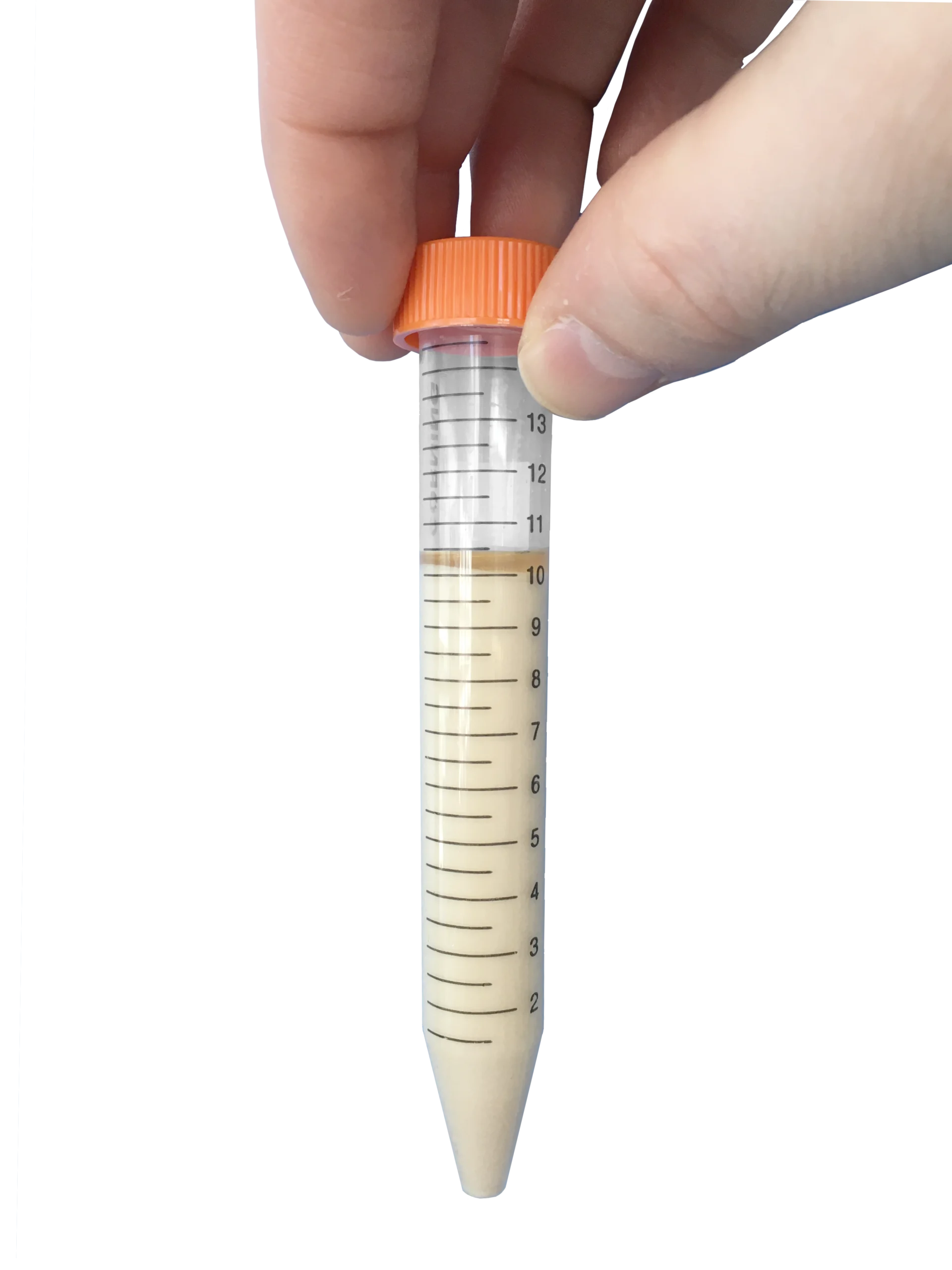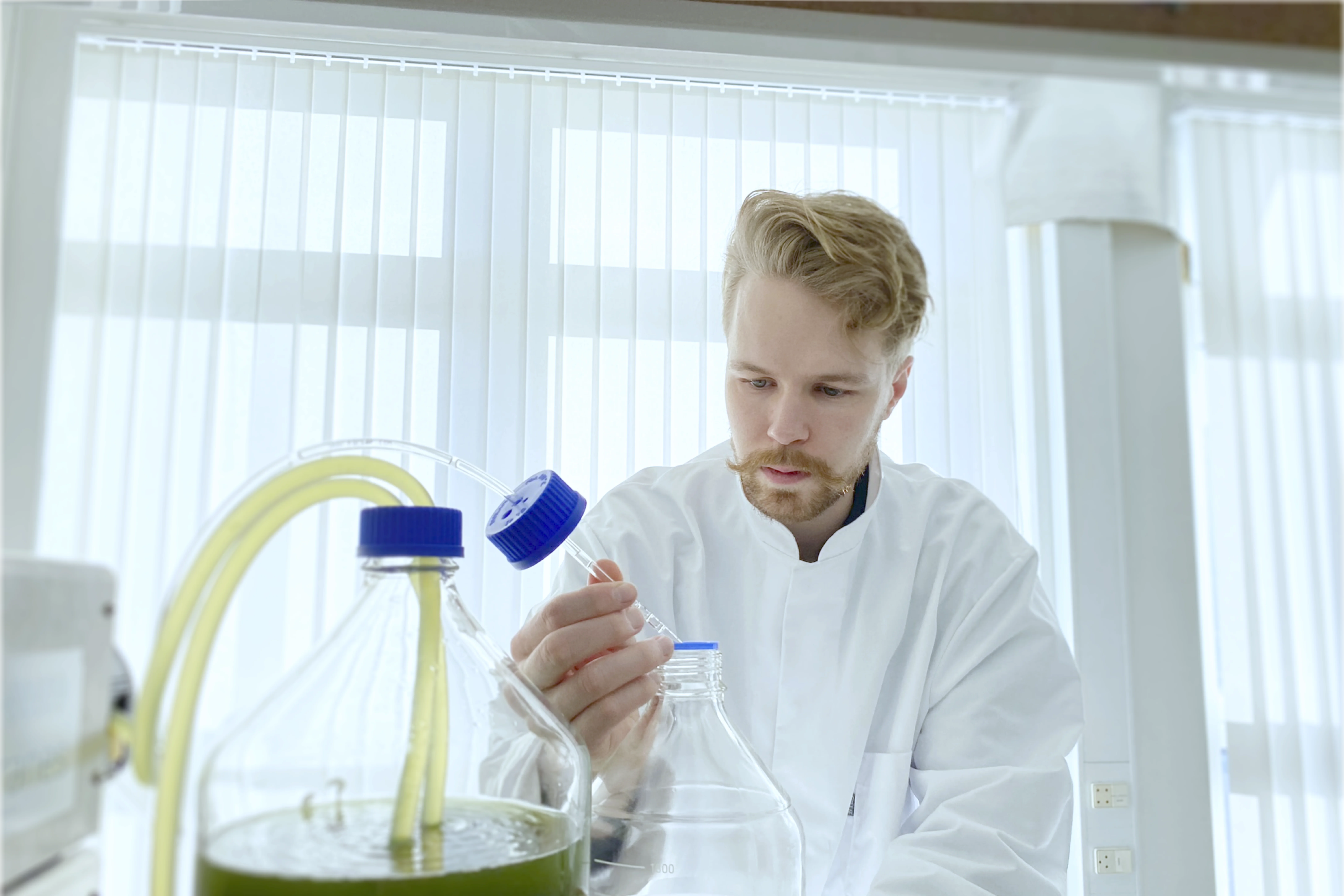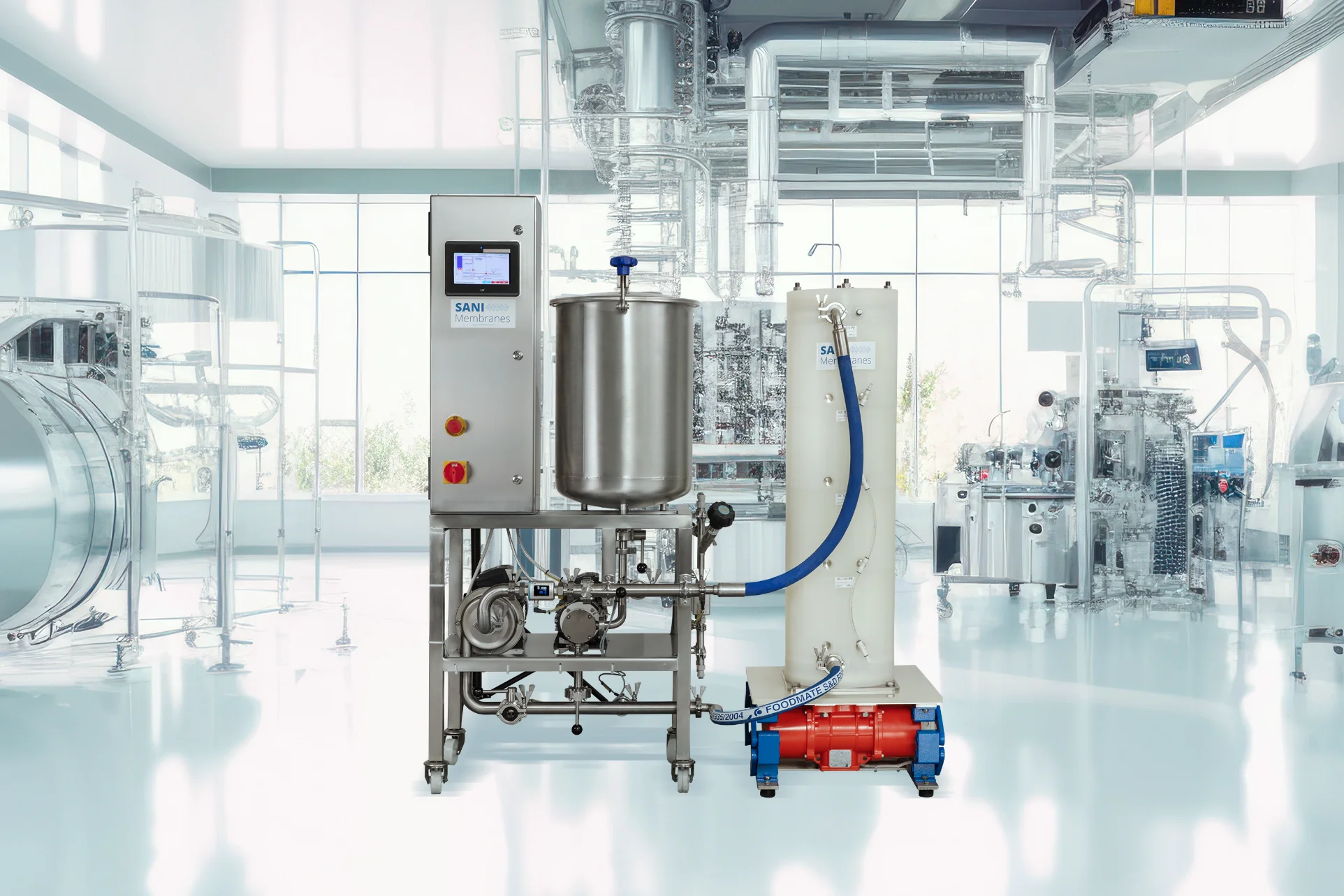What is microfiltration?
Microfiltration (MF) is a pressure driven separation process which is widely used for retaining particles larger than 0.1 µm. Typically, microfiltration is used for harvesting, concentration, clarification or separation of suspended solids, bacteria, cells or fat globules. The applications of microfiltration spans various industries including biotech, pharmaceutical, food, beverages, algae, nano carbon materials, wastewater, and many more.
How microfiltration works
Microfiltration operates by passing a fluid through a microporous membrane, allowing smaller molecules, such as lipids, most proteins, small molecules and water, to pass through. Meanwhile, larger particles such as suspended solids, bacteria, protein, microbes and cells are retained.
Microfiltration is operated at relatively low transmembrane pressure (TMP) in for example a tangential flow filtration (TFF) system. In TFF, the feed solution is circulated across the surface of a membrane, producing two streams: A particle-free permeate and a concentrated retentate containing the particles. This setup prevents the build-up of particles as the pump pressure creates a turbulent flow, preventing particles from sticking to- and layering up on the membrane.
Vibro® Membrane Filtration (VMF) is also creating turbulence on the membrane surface. However, not by pressure, but by vibrations on the membrane surface. As a result, VMF offers a more gentle and efficient microfiltration process, with higher yield, higher transmission, less fouling and less energy consumption than TFF.
Membrane filtration: Separation in sizes less than 5 µm

Microfiltration Application Example:
Single step clarification of API
- Handling of high solids loads and viscosities
- High transmission due to unique separation process control
- Low shear process
Description:
In this example, VMF is used for an extracellular clarification process, where the fermentation broth is processed directly to a clear, and a cleaned API/protein is achieved.
Due to the unique VMF technology, this setup can also be used for intracellular clarification, with a lysing step between the harvest tank and the VMF unit.
Traditional clarification involves several unit operations, each complicated and causing yield loss. VMF eliminate these steps, uses significantly less energy, requires less manual labor, has a small foot print, and uses less water and CIP chemicals.

Microfiltration Application Example:
Concentration of E.coli
- Concentration to highest pumpable level
- High recovery – Minimal fouling
Description:
In this example, the fermentation broth containing E. coli bacteria has been harvested and concentrated directly from the harvest tank using VMF technology.
VMF is characterized by having very low flow resistance and being capable of uniform TMP, while being easy to clean and drain. Combined with the vibrations creating turbulence at the membrane surface, fouling is minimized, and concentration levels are only limited by the pumpability properties of the media. For products like E.coli, this means that exceptionally high concentration levels can be reached.

Microfiltration/Ultrafiltration Application Example:
Recovery and concentration of protein
Description:
In this example, VMF is applied for an extracellular protein process, where the fermentation broth is processed directly, and a concentrated protein is achieved.
The fermentation broth is processed in a Vibro® microfiltration unit, where the cells are separated from the proteins. The resulting concentrate (retentate) is returned to the harvest tank. The positive pump creates an ultralow TMP that prevents fouling from building up. This means that the Vibro® unit sustains an exceptionally high transmission of protein throughout the process. The cell free protein (permeate) from the Vibro® microfiltration unit, is transferred to the product tank.
From the product tank, the protein is gently concentrated in a Vibro® ultrafiltration unit, where the concentrate is returned to the product tank. A positive pump creates the TMP needed for the process and can return the protein free retentate to the harvest tank. In the harvest tank, the retentate is used as a diafiltration buffer, to wash the cells further, while keeping the cell concentration low and avoiding excess water consumption (closed loop).
When the fermentation broth is virtually free of protein, the Vibro® microfiltration unit is stopped, and the Vibro® ultrafiltration unit is run until the desired protein concentration is reached.
This setup makes it possible to achieve +95% recovery without using additional water or buffer for diafiltration.
In this setup, it is also possible to change buffer, adjust pH etc. during the process.




